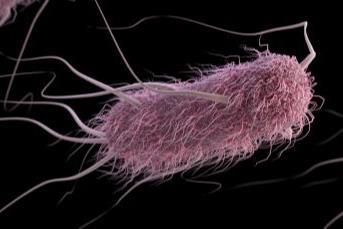Flagellated bacteria are propelled by the rotation of helical flagellar filaments, each with flagellar motor at its base.
Take Escherichia coli (E. coli) for example - each cell has 3-7 flagella, whose rotation as a helical bundle enables the cell to move smoothly. The flagellar motors are sensitive to the load they drive, generating varied torque at different speed. The motor torque remains approximately constant within a knee speed, while it drops rapidly above the knee speed.

It is previously believed that when bacteria swim in free liquid environment, the flagellar motor is under high load since flagellar rotation speed is typically lower than the knee speed. However, results measured by a research team led by Zhang Rongjing and Prof. Yuan Junhua from the University of Science and Technology of China (USTC) suggest an inconsistency.
Dispelling misunderstanding
The research team discovered incomplete set of stator units in flagellar motors of bacteria through torque-speed measurements, dispelling the previous misunderstanding in the mechanism of flagellar motors that the motors are under high load during bacterial swimming.
Their results were published online in Science Advances on Nov. 3.
In further research, researchers carried out motor resurrection experiments and measured the torque-speed relationship when bacteria swim in media with different viscosities. In the motor resurrection experiments, the rotation speed was found increasing step by step when a bead was suddenly attached to a filament. The results revealed that the flagellar motors were under intermediate load and had an incomplete set of stator units that was half full.
Testing robustness
With a half-full complement of stator units, swimming bacteria can adapt to medium with high viscosity by increasing the numbers of stator units. To test the robustness, researchers designed a microfluid chamber consisting of three separate streams with laminar flow to rapidly change the viscosity. The result shown that the flagellar rotation speed plunged after a sudden increase in viscosity and then gradually increased.
The results demonstrate the robustness of the flagellar rotation against changes in load condition. In light of these findings, those assumptions previously believed should probably be revisited, the researchers say.







No comments yet